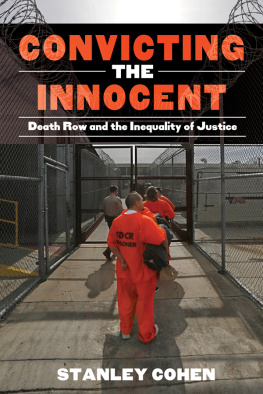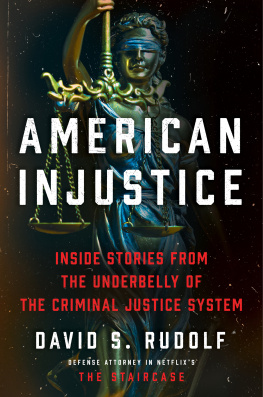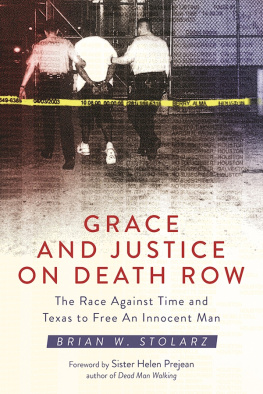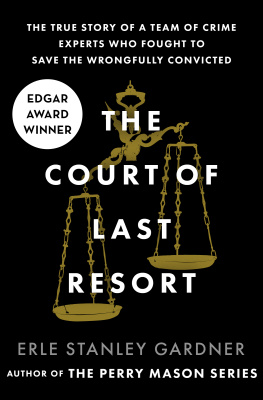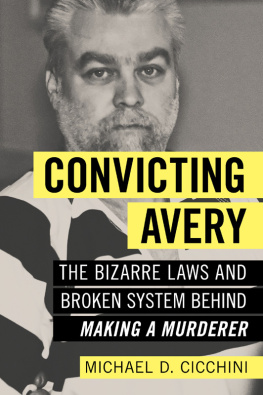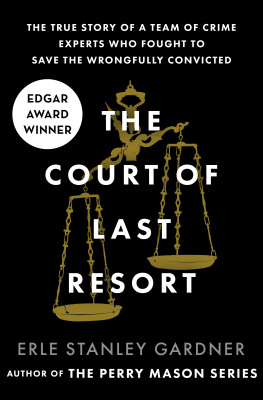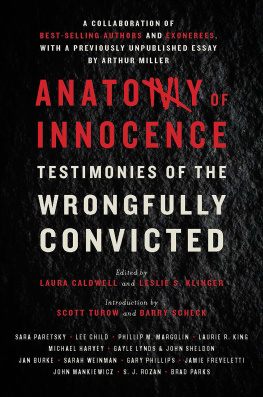Copyright 2016 by Stanley Cohen
All rights reserved. No part of this book may be reproduced in any manner without the express written consent of the publisher, except in the case of brief excerpts in critical reviews or articles. All inquiries should be addressed to Skyhorse Publishing, 307 West 36th Street, 11th Floor, New York, NY 10018.
Skyhorse Publishing books may be purchased in bulk at special discounts for sales promotion, corporate gifts, fund-raising, or educational purposes. Special editions can also be created to specifications. For details, contact the Special Sales Department, Skyhorse Publishing, 307 West 36th Street, 11th Floor, New York, NY 10018 or .
Skyhorse and Skyhorse Publishing are registered trademarks of Skyhorse Publishing, Inc., a Delaware corporation.
Visit our website at www.skyhorsepublishing.com.
10 9 8 7 6 5 4 3 2 1
Library of Congress Cataloging-in-Publication Data is available on file.
Cover design by Anthony Morais
Print ISBN: 978-1-63220-646-6
Ebook ISBN: 978-1-63220-813-2
Printed in the United States of America
ALSO BY STANLEY COHEN:
The Game They Played (1977, 2001)
The Man in the Crowd: Confessions of a Sports Addict (1981)
A Magic Summer: The 69 Mets (1988, 2003)
Dodgers! The First 100 Years (1990)
Willies Game (with Willie Mosconi (1993)
Tough Talk (with Martin Garbus, 1998)
The Wrong Men (2003)
The Execution of Officer Becker: (2006)
Beating the Odds (with Brandon Lang) (2009)
The Man in the Crowd (a revised, expanded edition, 2012)
For my wife, Betty,
who, for sixty years,
healed all the wounds,
bridged all the gaps, and,
in myriad ways,
transformed the frail thread of reality
into the hard coin of reality
Contents
The degree of civilization in a society can be judged by entering its prisons.
Fyodor Dostoyevsky, The House of the Dead
There will be no lasting peace, either in the heart of individuals or in social customs until death is outlawed.
Albert Camus, Reflections on the Guillotine
Introduction
O N APRIL 3, 2014, Tommy Lee Sells was put to death at the Texas State Penitentiary in Huntsville for fatally stabbing a thirteen-year-old girl in Georgia fifteen years earlier. The execution, carried out by lethal injection, went smoothly. Sells closed his eyes and took a few deep breaths. Thirteen minutes later he was pronounced dead. The efficiency of the procedure surprised no one. The death house in Huntsville is the place to go if one wishes to see executions carried out to perfection. Texas, after all, is the capital punishment capital of America. Since 1976, the state has been home to nearly half of the 1,382 executions in the United States. Executing prisoners is a Texas pastime whose popularity is exceeded only by football.
The story of Sellss execution was noteworthy only because it was the first to follow a decision by the United States Supreme Court rejecting the right of the condemned to know the source or the contents of the drug being used to kill them. Just a few weeks later, the issue of lethal injection and the question of the death penalty itself began tugging at the nations conscience when a botched execution resulted in the prolonged, agonizing death of an Oklahoma inmate.
Late in the afternoon of April 29, Clayton D. Lockett was wheeled into the death chamber at McAlester, Oklahoma, to be executed for the murder of a nineteen-year-old woman in 1999. Second only to Texas in applying the death penalty, Oklahoma might have been expected to carry it off without incident. But things started going wrong within just a few minutes. At 6:23, a sedative, midazolam, which the state had not previously used, was injected into Locketts arms. About five minutes later, Lockett started blinking and his eyes turned glassy and then closed, according to reports from the scene by Ziva Branstetter, an editor at The Tulsa World , and Dean Sanderford, the condemned mans attorney. At 6:33, the physician in charge said Lockett was unconscious and the team began to administer two lethal drugs, one to paralyze the prisoner and one to make his heart stop. Within three minutes, Locketts body started twitching; he rolled his head from side to side. He mumbled something inaudible and tried to lift his upper body from the gurney. At 6:39, sixteen minutes after the procedure had begun, the states director of corrections halted the execution when the physician found that Locketts vein had ruptured. Following another twenty-seven minutes of what some described as torture, Lockett was declared dead of a massive heart attack by Department of Corrections Commissioner Robert Patton. About six weeks after the incident, an independent autopsy commissioned by Locketts attorneys concluded that the problem was caused by the failure of the executioners to place the injection properly in a vein in Locketts groin. As a result, the drugs were not pumped directly into the prisoners bloodstream. According to the autopsy, Locketts vein had not collapsed, as the Oklahoma prison official had reported.
The botched execution, as it has been called, attracted notice not only throughout the country but around the world, particularly in Europe. The death penalty is banned in the European Union which also has restricted the export of drugs used in lethal injections. Members of the EU view the United States addiction to the death penalty with disdain. An anonymous tweet on Twitter seemed to capture the prevailing feeling on the continent. It read: How could Oklahoma botch an execution? If theres one thing I would expect Americans to know how to do by now, its kill somebody.
But apparently they did not, at least not those who were in charge of executing prisoners. For just a few months later, in July, an even more horrific execution was conducted in Arizona. It took the state nearly two hours to kill Joseph R. Wood III who, according to witnesses, repeatedly gasped while the execution was carried out. During that time, Woods attorney filed an emergency appeal to a Federal District Court and placed a call to US Supreme Court Justice Anthony M. Kennedy asking that the procedure be halted because it was in violation of the cruel and unusual clause of the Eighth Amendment. Kennedy turned down the request and Wood died before the district court responded. Arizona officials said they used the same combination of drugs that had been used in Ohio months earlier on Dennis McGuire, who also suffered through an execution that lasted longer than expected. The day after Woods execution, the attorney general of Arizona called a temporary halt to executions in the state.
Lethal injection was adopted as the procedure of choice in the United States beginning in 1977. It replaced, in reverse chronological sequence, the electric chair, the gas chamber, hanging, and the firing squad. Deemed to be the most humane form of execution, estimates nonetheless indicate that 7 percent of such executions have gone bad. As recently as 2008, a divided Supreme Court ruled that death by lethal injection did not violate the Eighth Amendments prohibition of cruel and unusual punishment. In his decision, Chief Justice John Roberts wrote: Simply because an execution method may result in pain, either by accident or as an inescapable consequence of death, does not establish the sort of objectively intolerable risk of harm that qualifies as cruel and unusual. Justice Antonin Scalia, the courts leading advocate of the death penalty, offered even more extreme views on more than one occasion. Where does it come from that in the execution of a person who has been convicted of killing people we must choose the least painful method possible? Is that somewhere in our Constitution? The court, he said, was considering an execution, not surgery. In another instance, Scalia mused, How enviable a quiet death by lethal injection, as he contrasted the death of a condemned killer with that of his victim.

